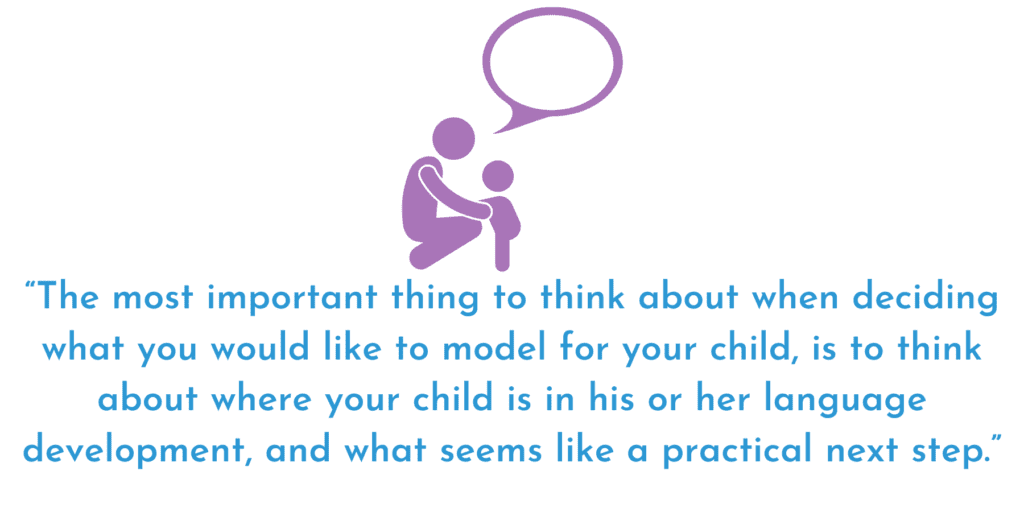Each time you speak in front of or to your baby or toddler, you are modeling language for them! Infants absorb the speech patterns and sounds that we express, meaning the ways that we speak to them matter. Language modeling is a tool that any parent can use to foster their child’s language development. Language learning and milestones happen at all ages, you can check out this list for what to expect as your baby grows: Language development: Speech milestones for babies – Mayo Clinic
So you might be thinking, but how do I model language for my child? How do I know I’m modeling the right thing? The key to modelling language is to model the language you want your child to develop. There are four types of ways you can model language for your child, and below we will briefly explain each.
Recasting
This expands your child’s language by repeating what they say in a more detailed or grammatically correct manner.
Example: “Doggie goed!” Response: “Yes, the dog went into his crate!”
Self-Talk
This simple way of teaching your child includes narrating your own actions to help your child understand how to correctly use expressive language. This can also help children learn the labels of different things within their environment.
Example: You might describe what you are doing as you make the bed, “I am tucking the sheets under the mattress!”
Example: You might describe your emotions in a stressful situation, “I cannot get my cell phone to work. I am feeling frustrated. I’m going to stay calm and ask mommy to help me.”
Parallel Talk
This includes narrating what your child is doing, seeing, hearing, eating, etc.
Example: “You are eating! You are eating the green avocado. Delicious avocado!”

Conversational Turns
Conversational turns are described as “simple back-and-forth alternations between a child and an adult…a turn has occurred when an adult speaks and a child follows, or vice versa, with no more than five seconds in between. Any speech-like, non-cry sound counts as a turn — from an infant’s coos to a toddler’s words (either real or made up).” (LENA)
Example: “Gack!” Response: “Gack, Gack!” …and so on
To learn more about how conversational turns impact early brain development, visit this link: Conversational Turns (lena.org)
Focused Stimulation
This last form of language modelling involves repeating a specific vocabulary word you would like your child to develop. To do this, repeat the word ten times during one activity and use it in a meaningful context.
Example: “The baby is happy. She loves to PLAY. She wants to PLAY with her toys and PLAY all day. Baby will PLAY and have so much fun! Baby is PLAYING with her favorite toy. Does baby want to PLAY with other toys? She will PLAY with so many toys today!”
Language modeling can be used at any stage. The most important thing to think about when deciding what you would like to model for your child, is to think about where your child is in his or her language development, and what seems like a practical next step. Give your child the chance to learn and explore by guiding their language learning in these intentional ways.








